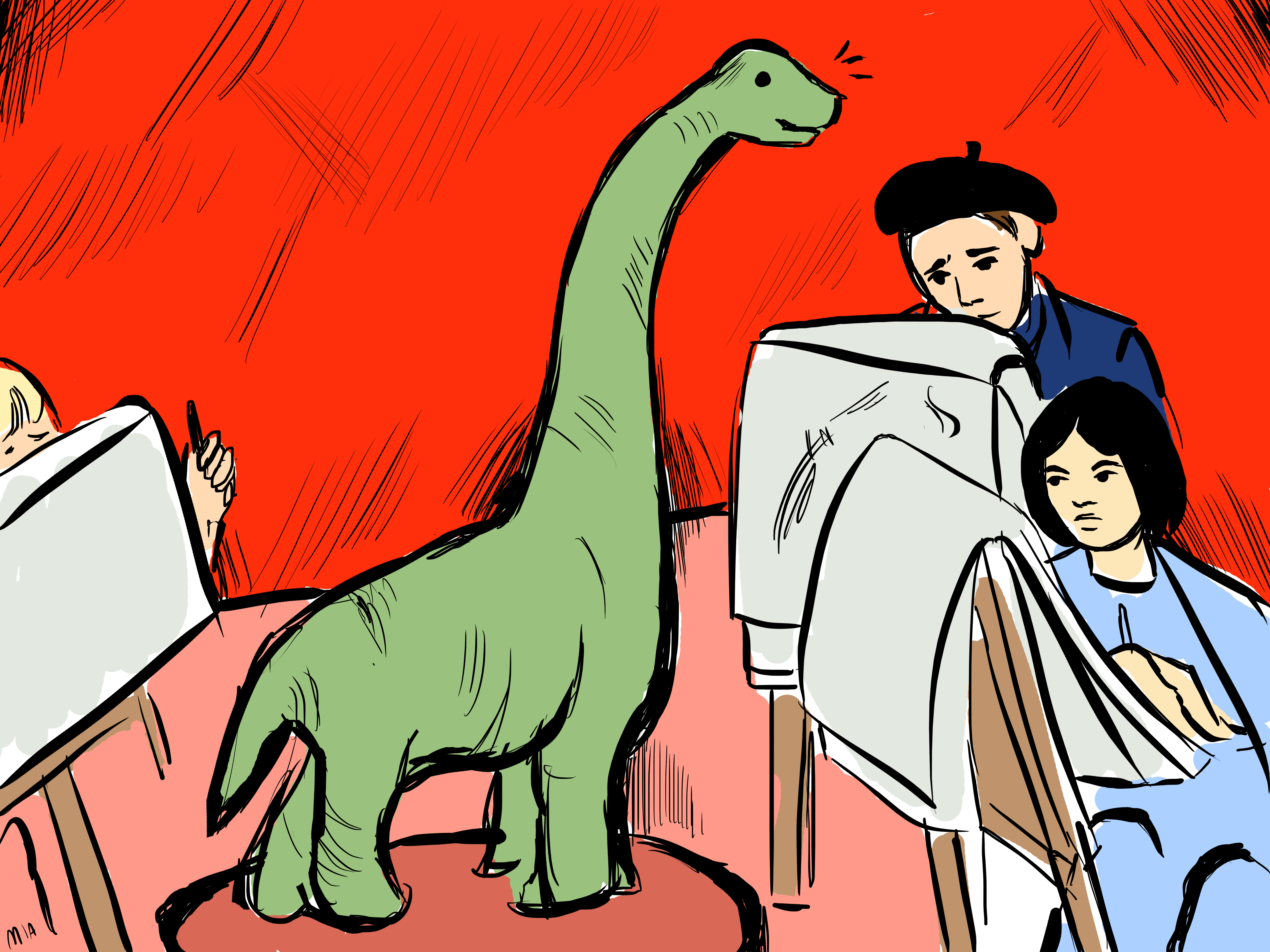They can be purple and friendly, cinematically monstrous, or wherever in that spectrum lies Robin Williams’ Smoochy. Regardless of their depiction, dinosaurs are known to excite — perhaps because of their unusual look, their great size, or the fact that they represent an almost unbelievable, bygone era in natural history.
Whatever the reason for the intrigue surrounding dinosaurs and other prehistoric creatures, they are brought back to life by the work of paleoartists.
A portmanteau of ‘paleo,’ which comes from the Ancient Greek word for ‘old,’ and art, paleoart is any artistic work that visually depicts prehistoric life based on current scientific knowledge. As such, paleoart has a significant influence on the public’s idea of species that no longer exists. Whether it is a Tyrannosaurus and Triceratops locked in mortal combat, a woolly mammoth cornered by spear-wielding Ice Age hunters, or a sabre-toothed cat attacking Hipparion horses, these illustrations of prehistoric scenes meld the precision of paleontology with the creativity of art.
An important aspect of creating paleoart is the science that underlies the presentation — gathering data and preparing the fossil is delicate work.
While providing a tour of his lab, Robert R. Reisz, a vertebrate paleontologist at UTM, pointed at an illustration of a Captorhinus skull, a focus of his research. The illustration shows the minute details of the almost 290-million-year-old skull, which is about the size of a thumb. Some of the information on bone fragments was gleaned through neutron tomography to attain a detailed anatomy of the skeleton.
Referring to another fossil — an armoured amphibian found in Nova Scotia — Reisz explained the painstaking procedure of fossil preparation, which required months of careful processing under a microscope by Diane Scott, the resident illustrator and long-time member of the Reisz lab.
Reisz explained that illustrations provide a critical form of mass communication for his research. “Science doesn’t happen in a vacuum, it’s all about communication… and the best way to communicate is visually.”
Referencing some of his more recent work, Reisz delineates the process of working with illustrators as a paleontologist. “We discuss the biology of the animal, we provide the anatomical information that we have and they do the flesh reconstructions based on the shape of the ribs, on the shape of the hands, and legs and neck and head,” said Reisz.
Reisz described the illustration process as consisting of three steps: observation of the fossil remains as they are, restoration of the original skeleton, and a flesh reconstruction illustration of the animal in a natural pose.
With a requirement for scientific precision, he said, “Most of the time our interpretation of the animal is almost entirely based on the evidence that is available from the fossil. We try not to extrapolate too much because that’s when errors creep in.” Yet, apart from attractiveness of the presentation, artistry is required to idealize incomplete or imperfect fossils.
For Julius T. Csotonyi, an acclaimed Canadian paleoartist and scientific illustrator, what started as a hobby transitioned into a successful career. After being provided with an opportunity to collaborate with the Scottish paleontologist Dougal Dixon on a dinosaur encyclopedia, Csotonyi’s work has since appeared in books, popular science magazines, museums, journals, and even on the back of commemorative coins produced for the Canadian mint.
Csotonyi has a PhD in microbiology, but he is not a paleontologist. For accurate representations he relies on collaborators along with his own investigations into the topic to create his pieces. “I will take that [knowledge] and look up additional background information to help fill in the gaps and provide a larger picture because often it’s an environmental piece that I’m reconstructing, not just an individual organism.”
Further emphasizing his collaborative process, Csotonyi highlighted the interplay between the researcher and the artist. Though he uses other techniques, he said that “most of the scientific illustration is digital because it’s a lot more malleable.” This malleability is helpful, according to Csotonyi, because “the process actually involves a lot of revision until… everybody is happy with it.” Even then, new research can lead to further modification to the illustrations.
Csotonyi also noted the need for balance in order for his pieces to be attractive and accurate. “I just need to be able to constrain the artwork by this [scientific] information, but the aesthetic appeal is really established largely by selecting an interesting composition… keeping this within the constraints of what would be realistic, keeping the environment as accurate as possible based on what we know.”
While the field has existed since the nineteenth century, the realistic animatronic depictions from Jurassic Park led to mainstream appreciation of the organisms and interest in the field of prehistoric art. Csotonyi has seen his field grow and recognizes its mass appeal. Though movies may take advantage of cinematic license in the portrayal of prehistoric creatures, he feels that it is “good to use it as an opportunity to be able to, as much as possible, educate people.”
Despite our increasing separation in time from these ancient creatures, the ability of paleoart to render prehistoric life as it may have been, helped by fundamental research and enabled by advanced technology, connects us to our ancient past.


